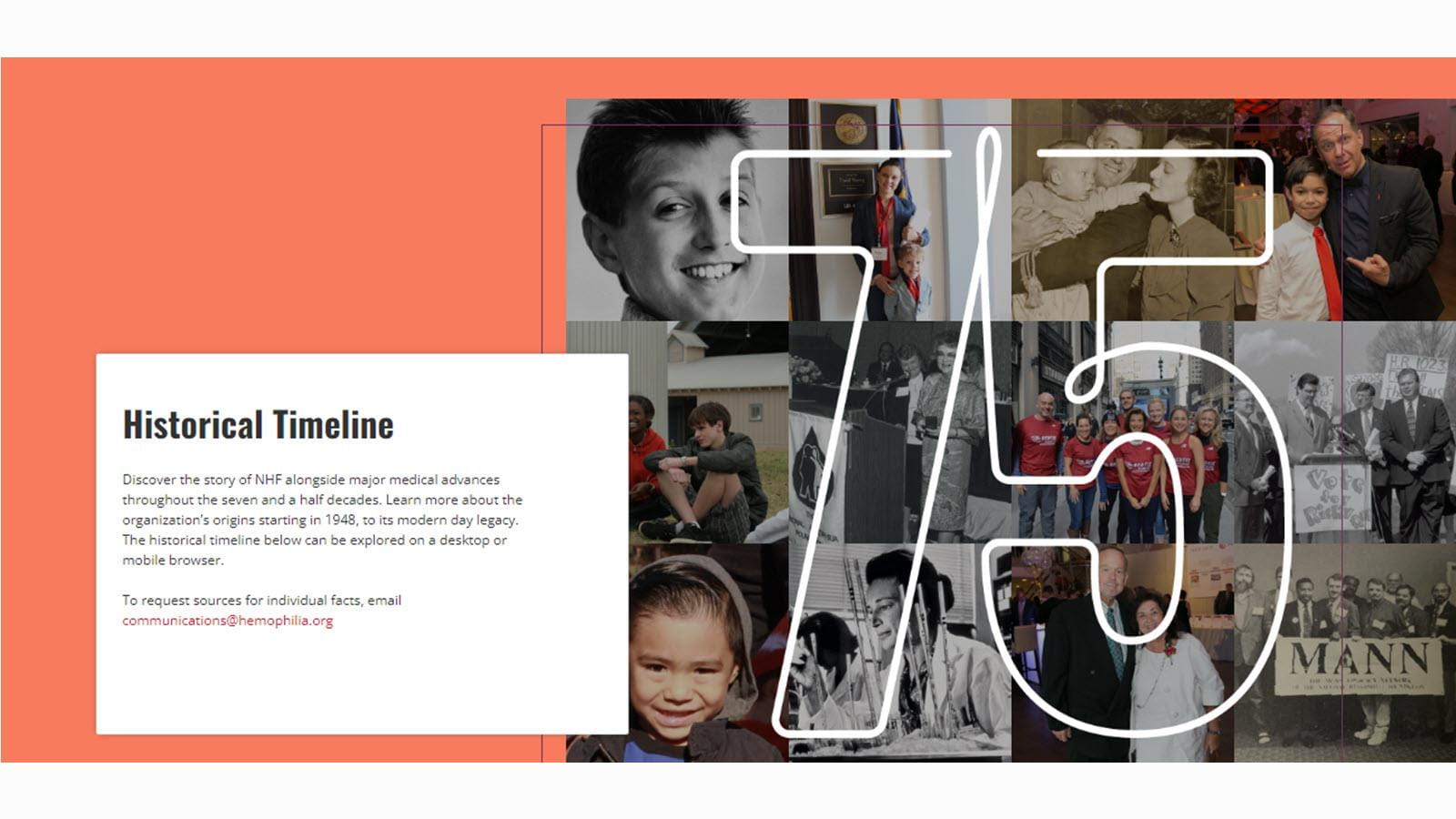When their son was just 14 months old, Robert and Betty Jane Henry learned that young Lee had hemophilia. It was the 1940s and the medical community had little to offer them, leaving Lee vulnerable to dangerous and life-limiting bleeds. But Lee’s parents responded with love and hope by founding the National Hemophilia Foundation in 1948, which this year turns 75.
Lee’s birth is the first key event featured in a comprehensive timeline the NHF created to help celebrate decades of progress for people who live with bleeding disorders.
Check out NHF’s complete history in their interactive timeline.
Here are five highlights:
1954 - Dr. Judith Graham Pool Publishes Her First Research Paper
When Judith Graham Pool joined Stanford University’s School of Medicine as a researcher, she shifted her focus from muscles to blood to study coagulation, or clotting. This body of work lead her to discover a method for separating Factor VIII, the protein essential to clotting, into a concentrate from frozen blood plasma. The resulting concentrate, known as cryoprecipitate, was a breakthrough that revolutionized treatment for hemophilia patients.
1976 – Hemophilia Treatment Centers Act of 1975
NHF successfully petitioned Congress to authorize $3 million in federal funding to establish a network of 20 hemophilia treatment centers. Each center would provide comprehensive care and for individuals with hemophilia types A, B and C, as well as von Willebrand disease.
1984 – MASAC Recommendation to Minimize Risk of HIV Transmission
Blood products tainted with human immunodeficiency virus (HIV) were causing an epidemic in the hemophilia patient population. Scientists discovered that by heating plasma, HIV could be inactivated. NHF’s Medical and Scientific Advisory Council (MASAC) soon recommended the use of heat-treated plasma concentrates after further studies by the Centers for Disease Control and Prevention (CDC).
1993 – New FDA Guidelines for Clinical Trials
The Food and Drug Administration (FDA) formally rescinded the 1977 policy that prevented most women from participating in clinical trials – an important development because hemophilia and bleeding disorders affect both men and women.
2003 – Genome Mapping Completed
The now-complete Human Genome Project generated the first sequence of the human genome, providing scientists with fundamental information needed to better understand many diseases, including hemophilia.



